Google Maps said the Anthropology museum was a half-hour walk down the Paseo de la Reforma from our hotel. So we figured, what the heck, it’s not raining and we only walked 3 miles yesterday, so we could do with a nice stroll down the avenue. The Paseo is a broad, tree-lined avenue commissioned by Emperor Maximilian to resemble the Champs-Elysees in Paris.
Along the way we encountered a protest outside one of the large money-center banks.
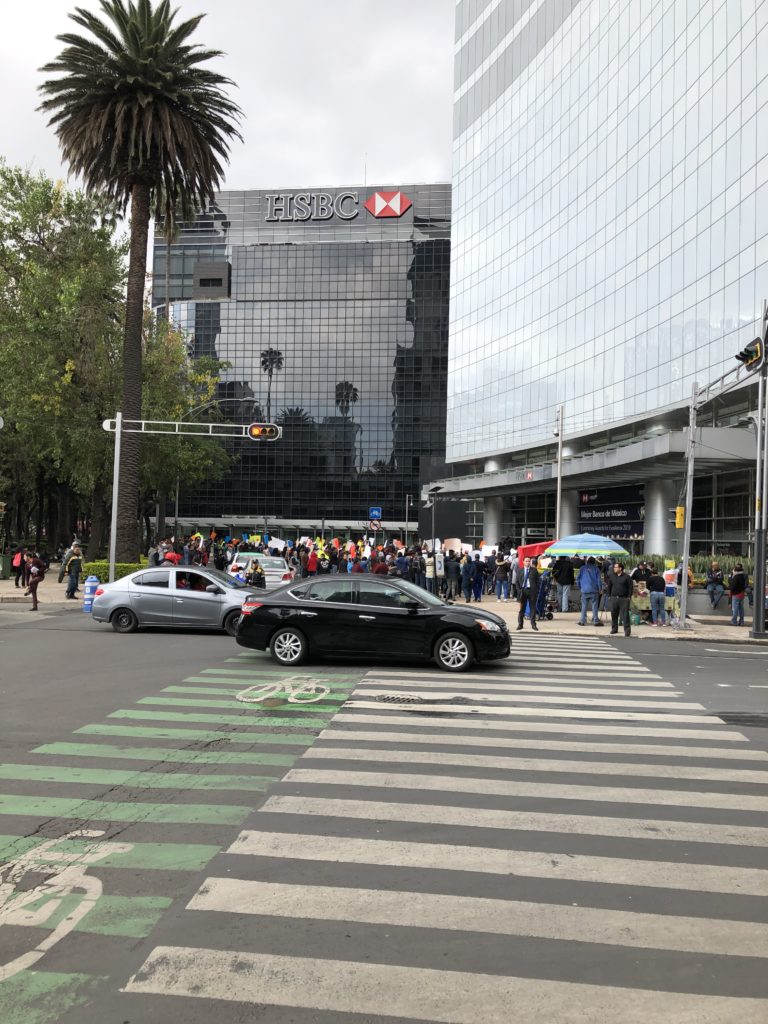
Further on we ran across a row of alebrijes.
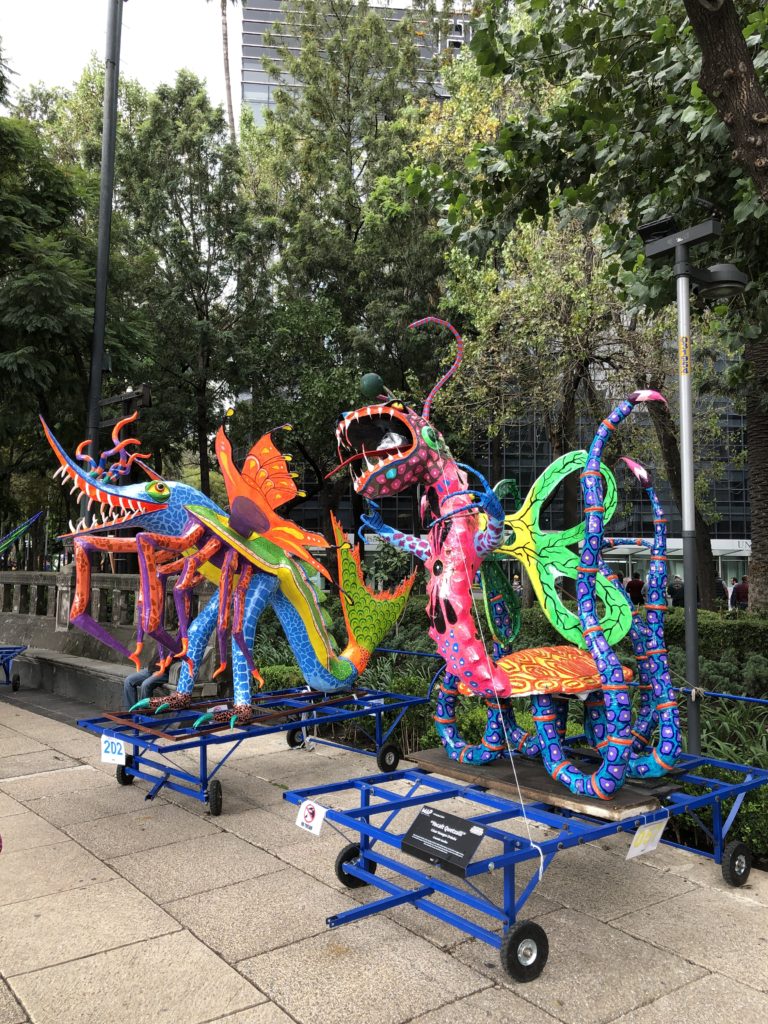
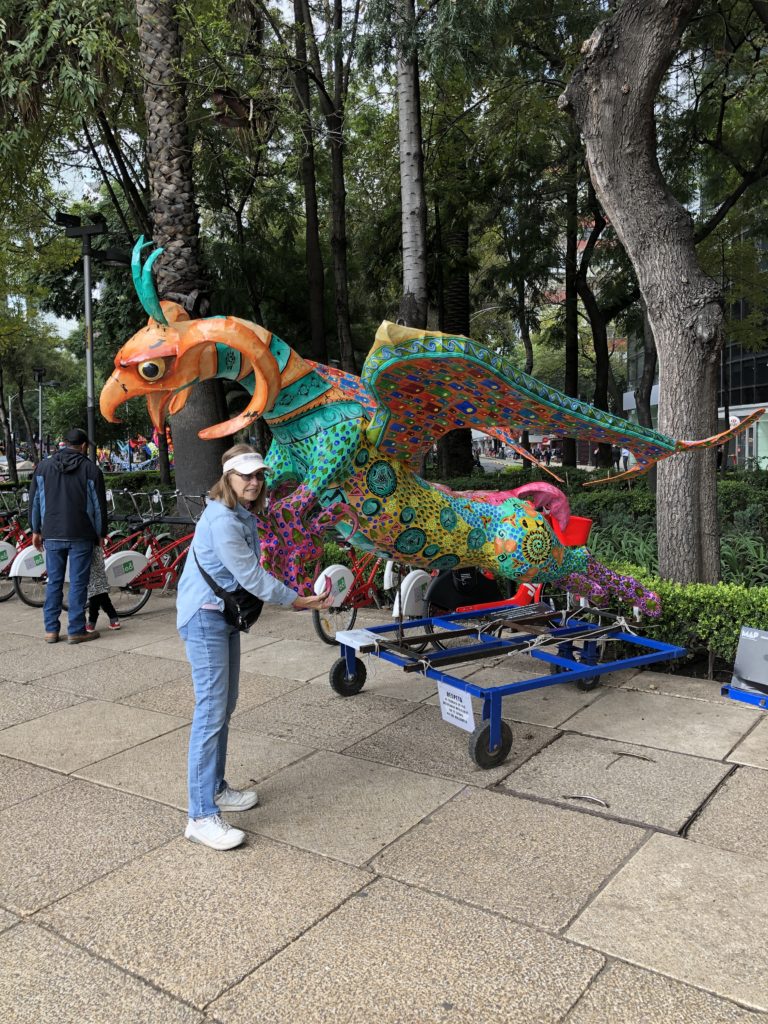
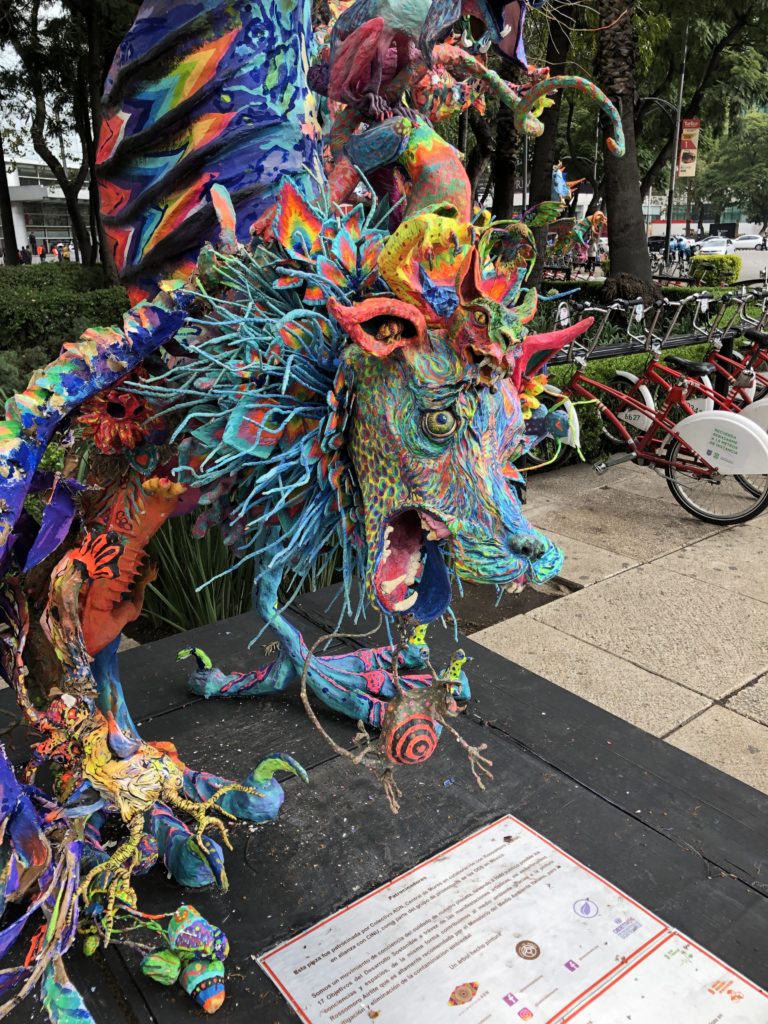
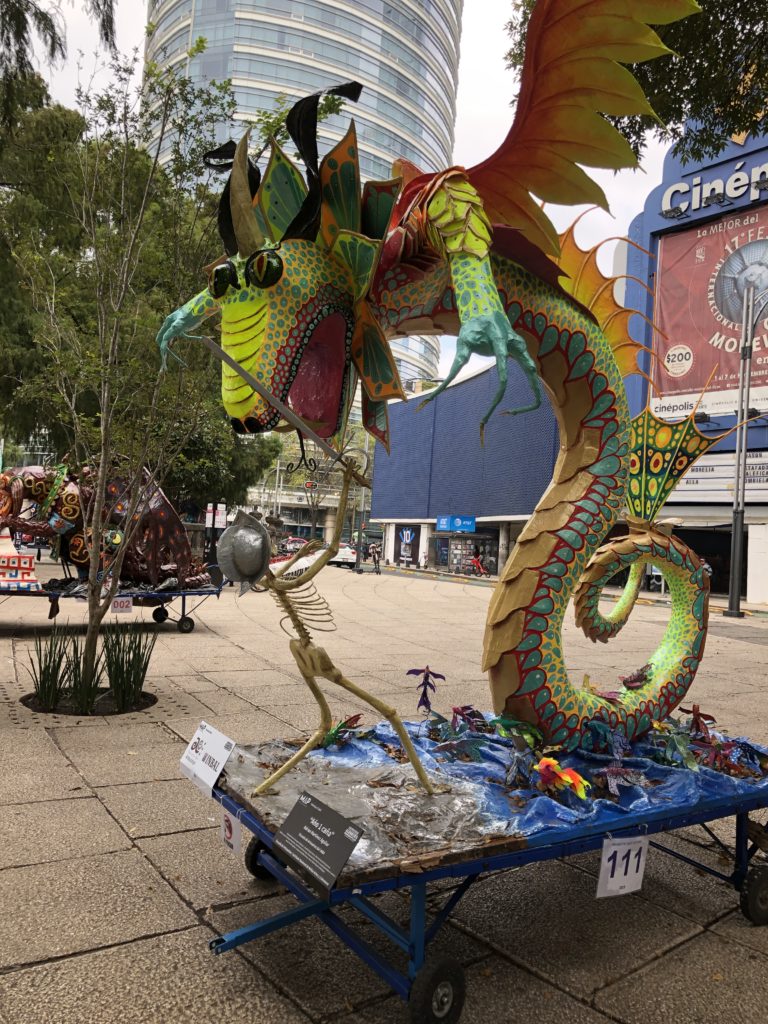
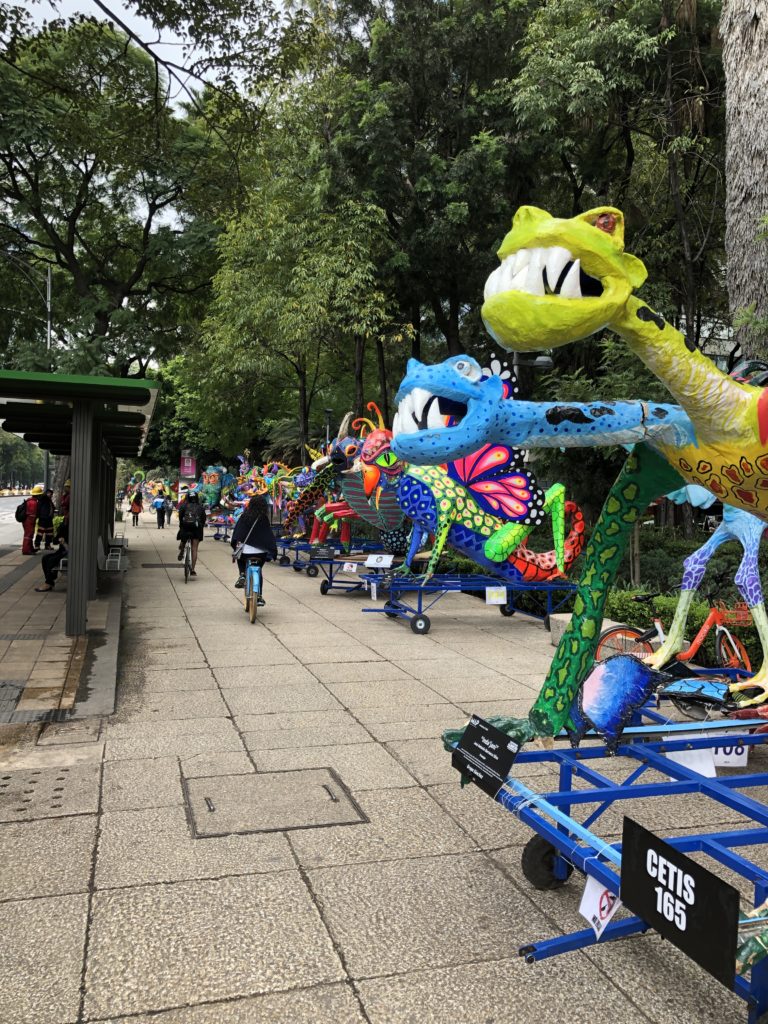
So we toddled along down the avenue and eventually arrived at the museum. The building itself is stunning.
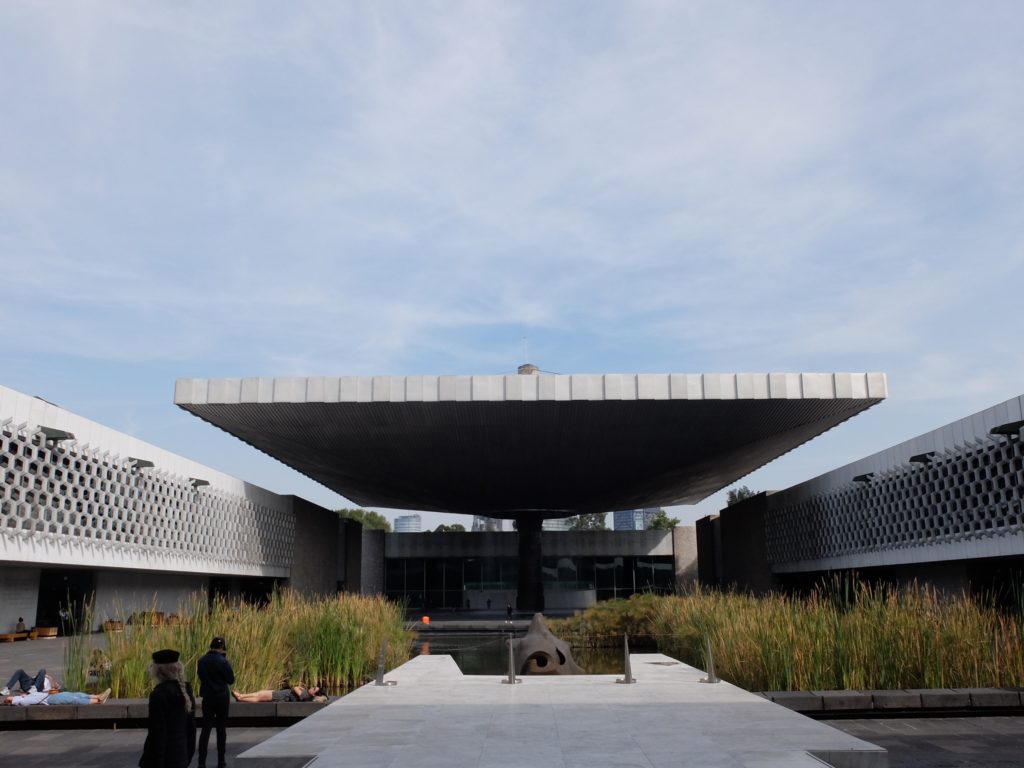
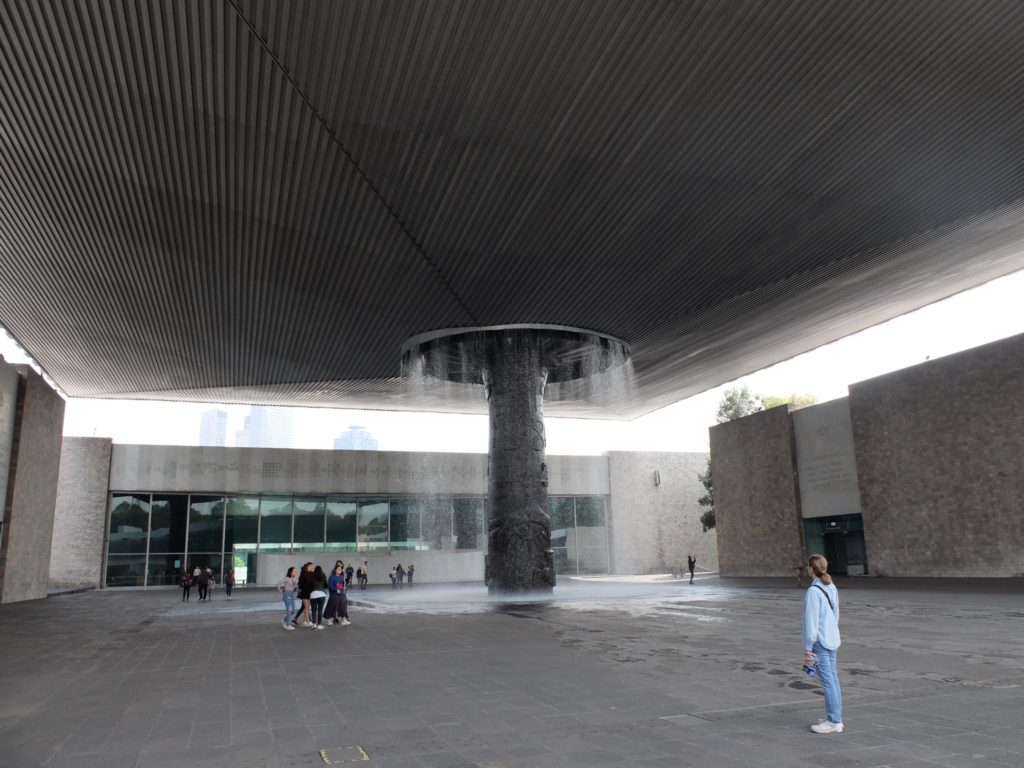
Exhibits start with the origins of the human species.
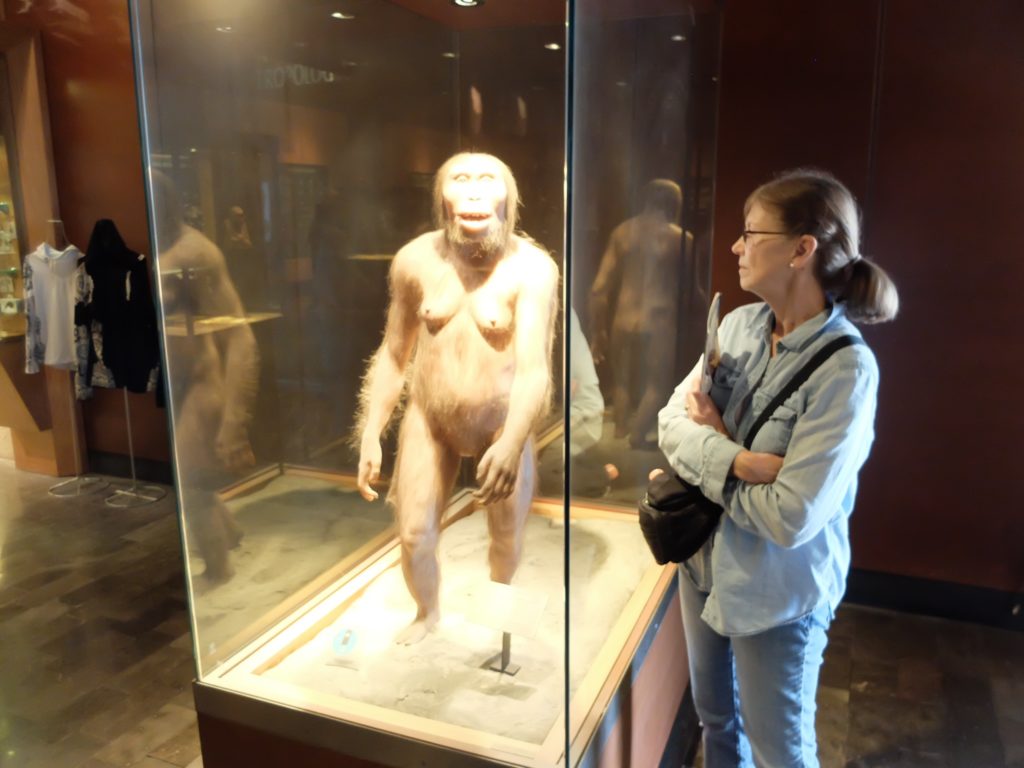
Following this introduction we moved to specifically the history of cultures in what is now Mexico.
We started with Teotihuacan. This was the most important city in the Central Plateau during the period from 100 BC to 700AD.
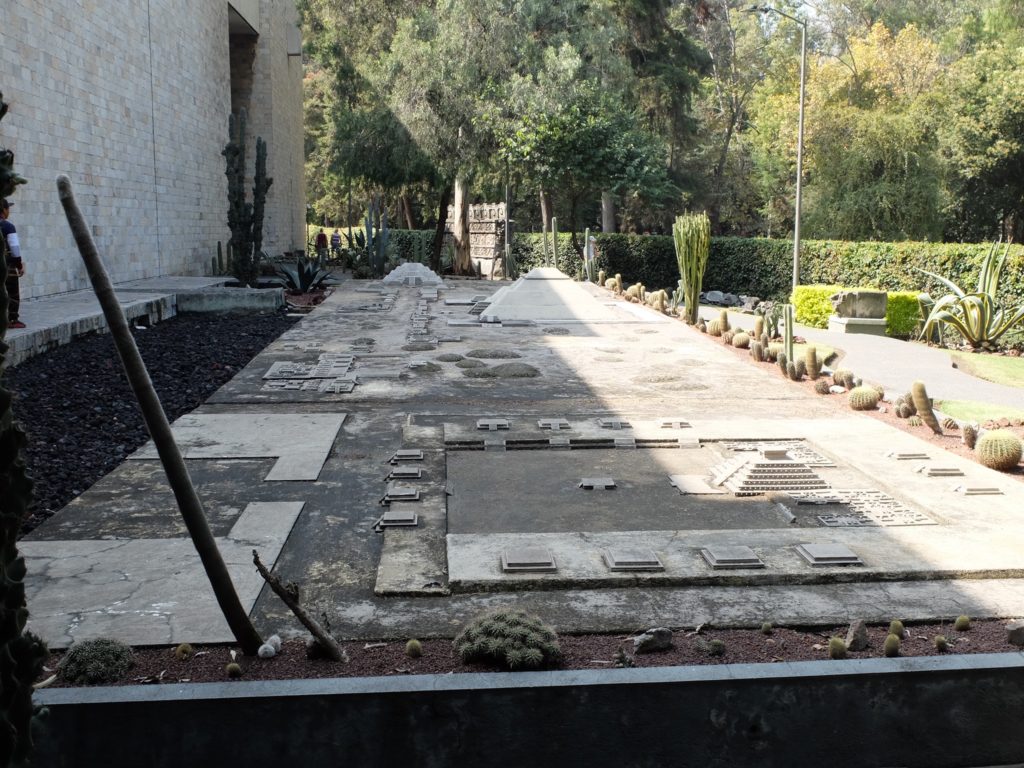
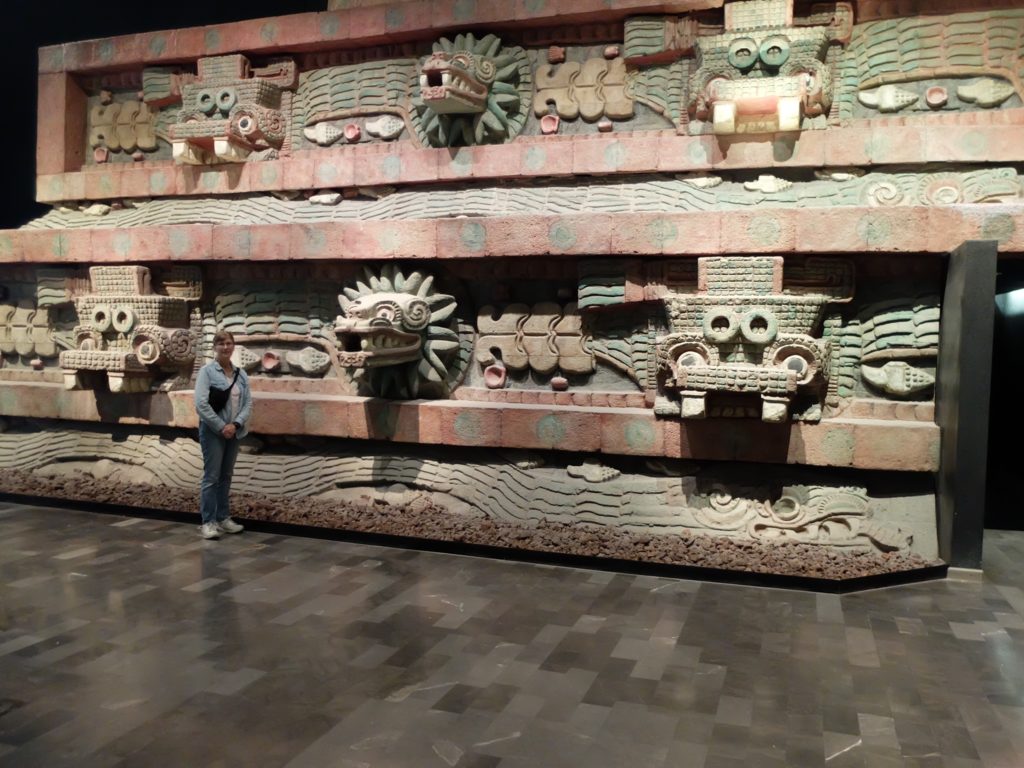
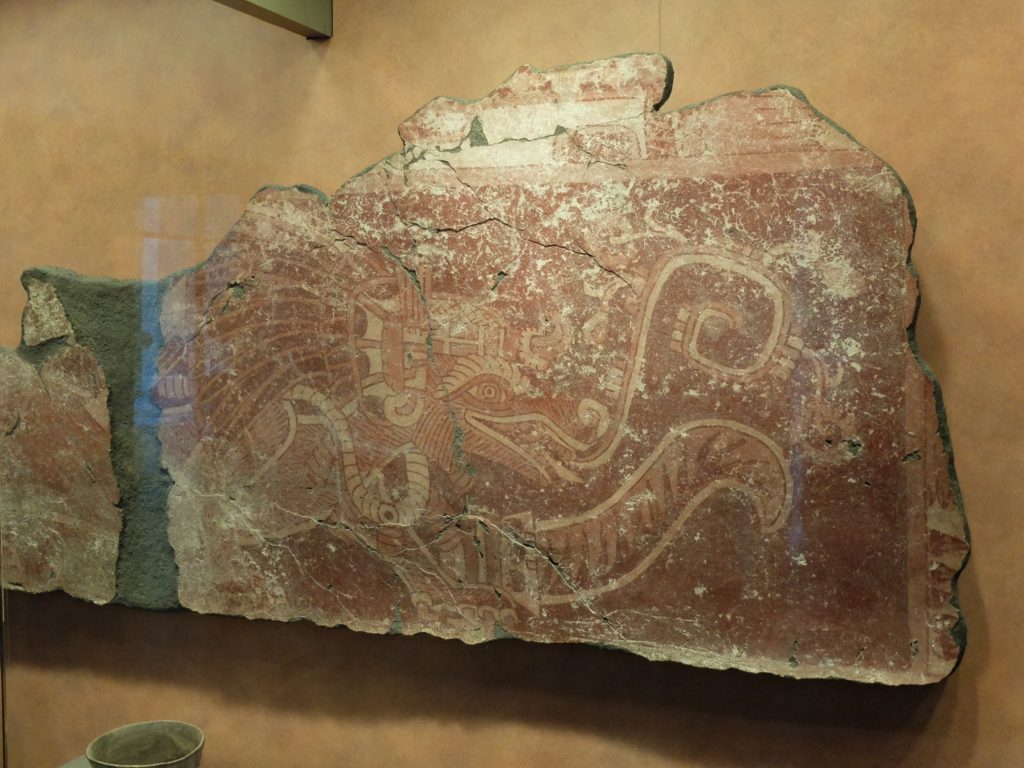
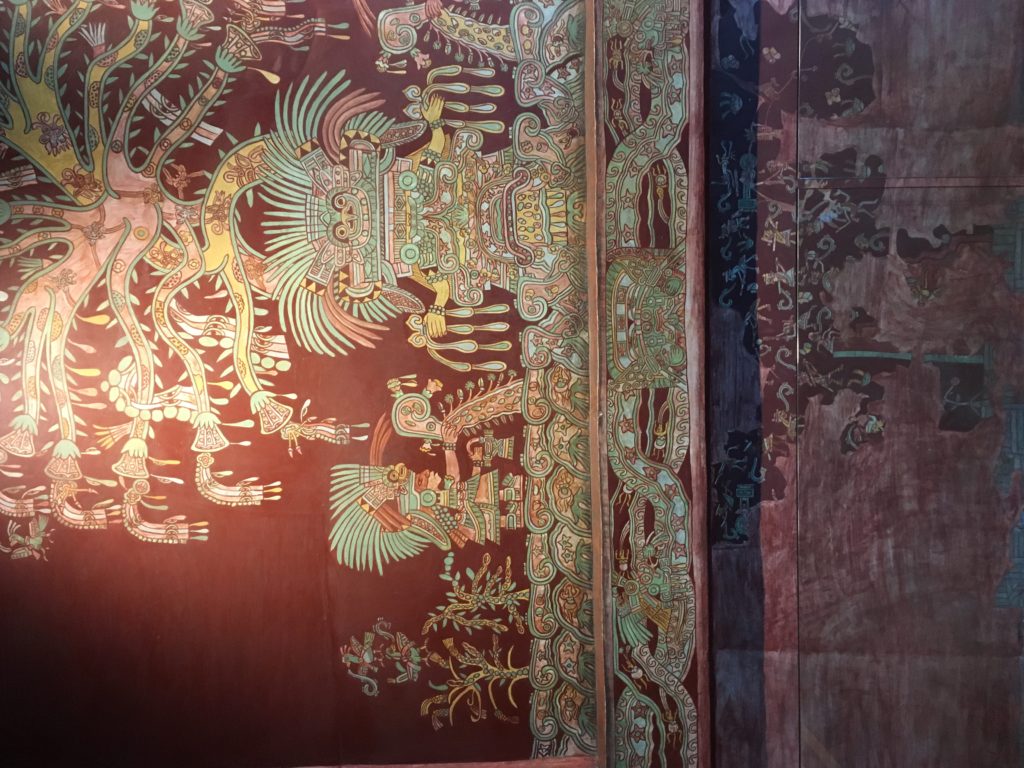
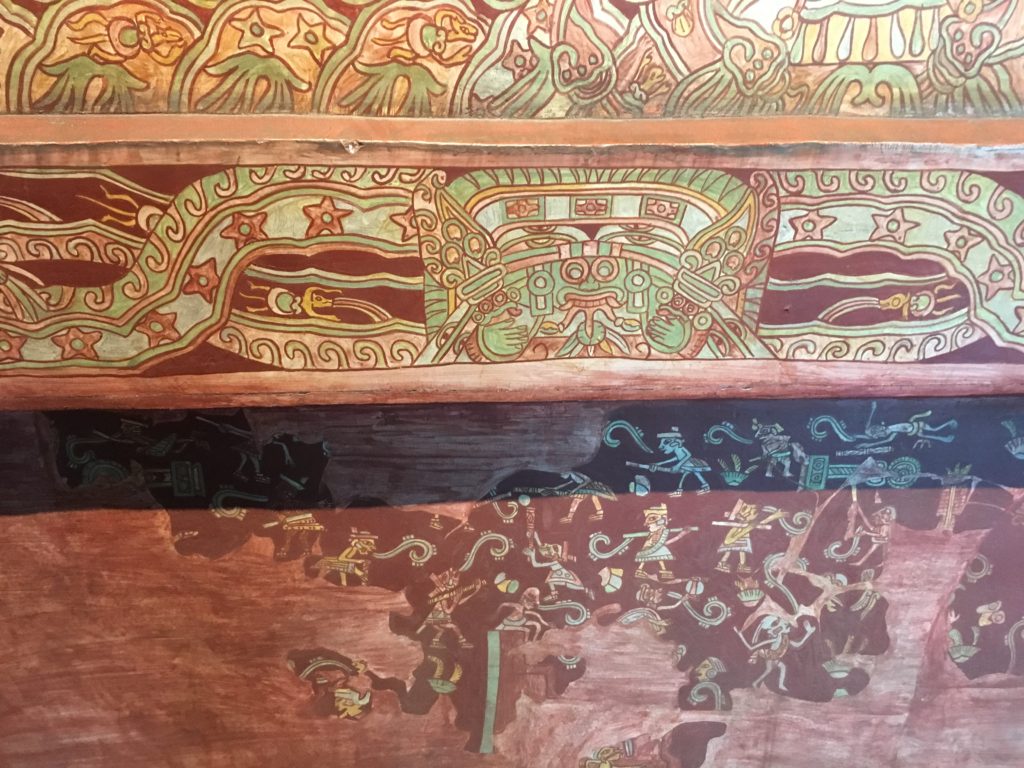
By then it was time for lunch.
The next period covered was the Toltec era (750-1200). This era saw the first use of metals as well as the establishment of warlike military states.
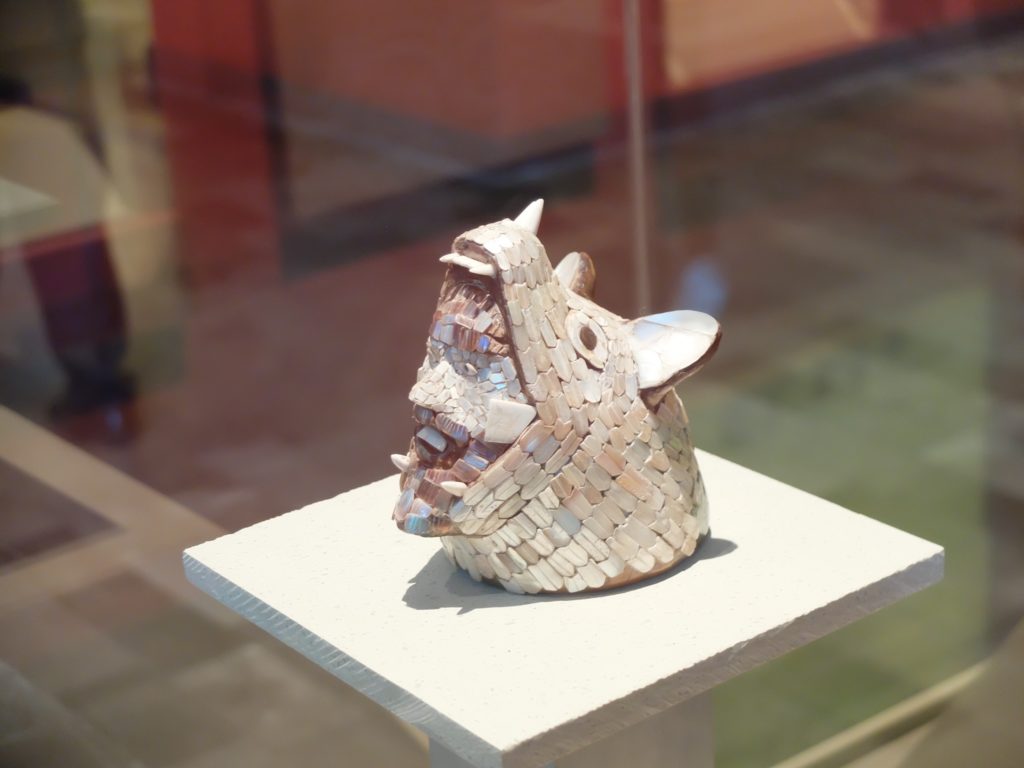
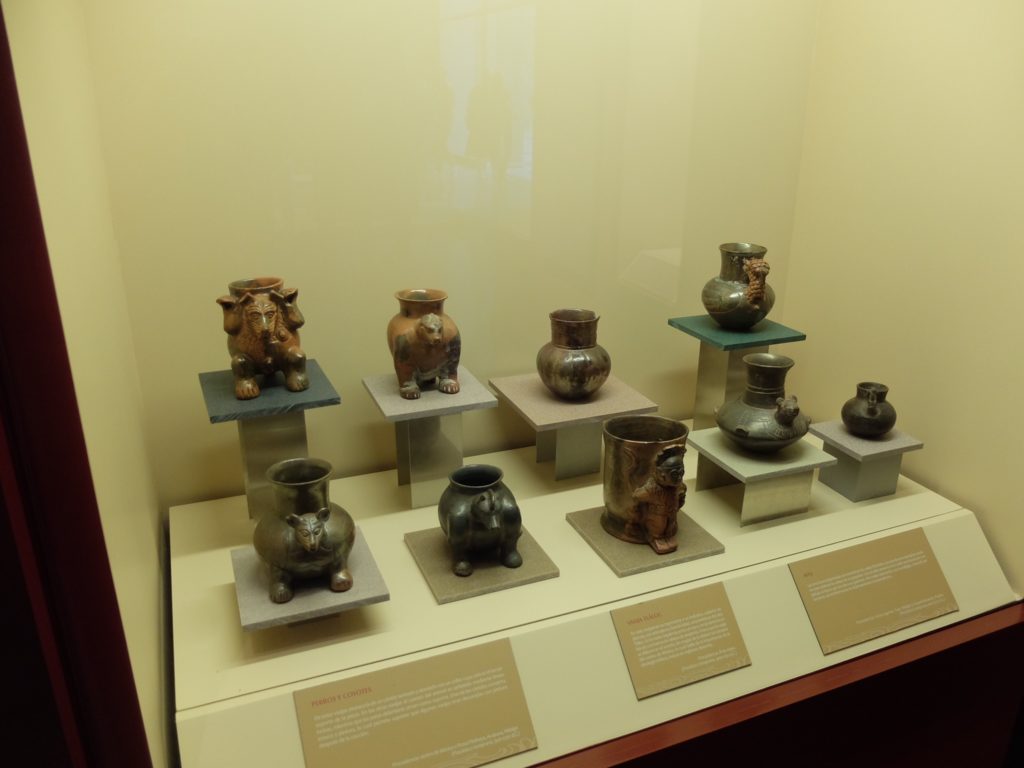
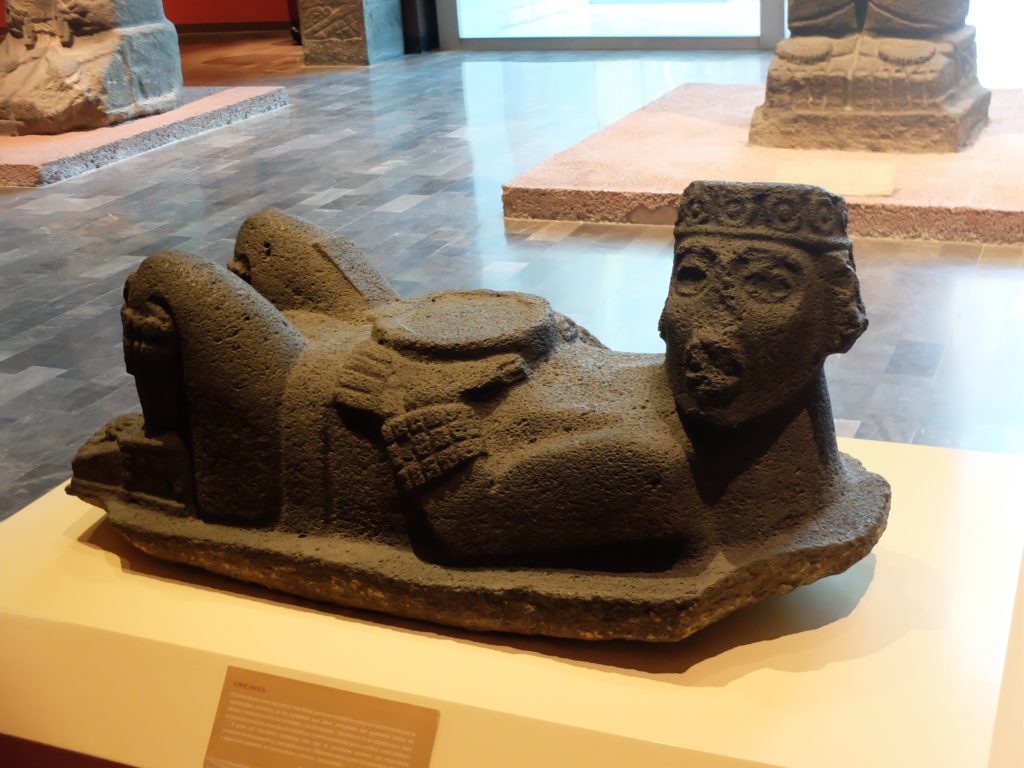
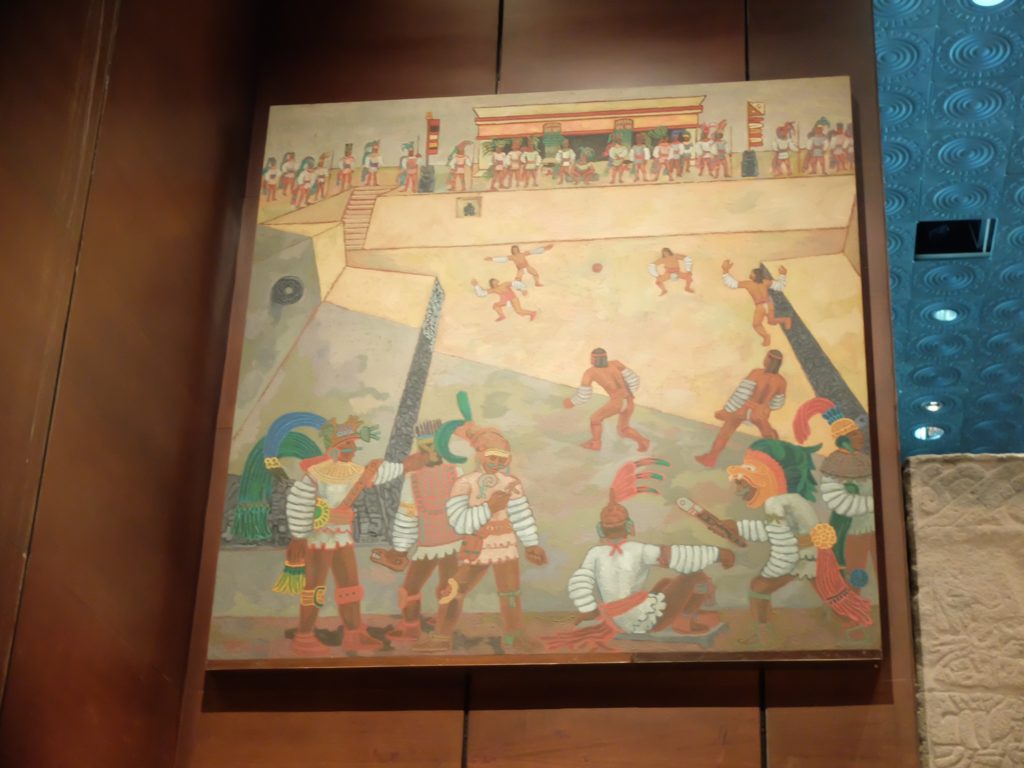
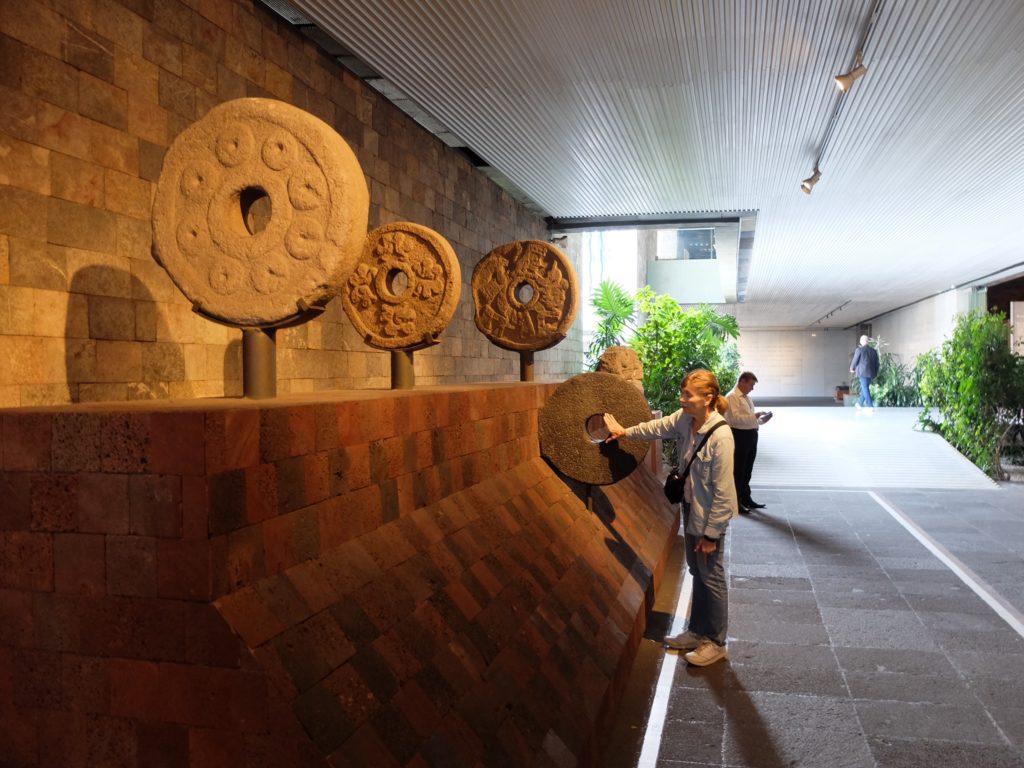
We finally arrived at the largest collection in the Museum – the Mexica era.
In a sense the story of modern Mexico (as told by the museum) begins with a journey. In this case a people known as “Aztecatl” (People from Aztlan) migrated from the north. Traveling some 200 years (and along the way changing their name to Mexica (me-SHI-ca) they eventually reached the shores of a large lake where they saw the symbol foretold in prophesy – an eagle eating a snake while sitting on a cactus. This was the sign that they were to settle on that spot and build their new city. We talked the other day about how they built islands to grow produce and were quite successful until the Spanish arrived, conquered them, drained the lake, and built Mexico City on the unstable lakebed. But I digress.
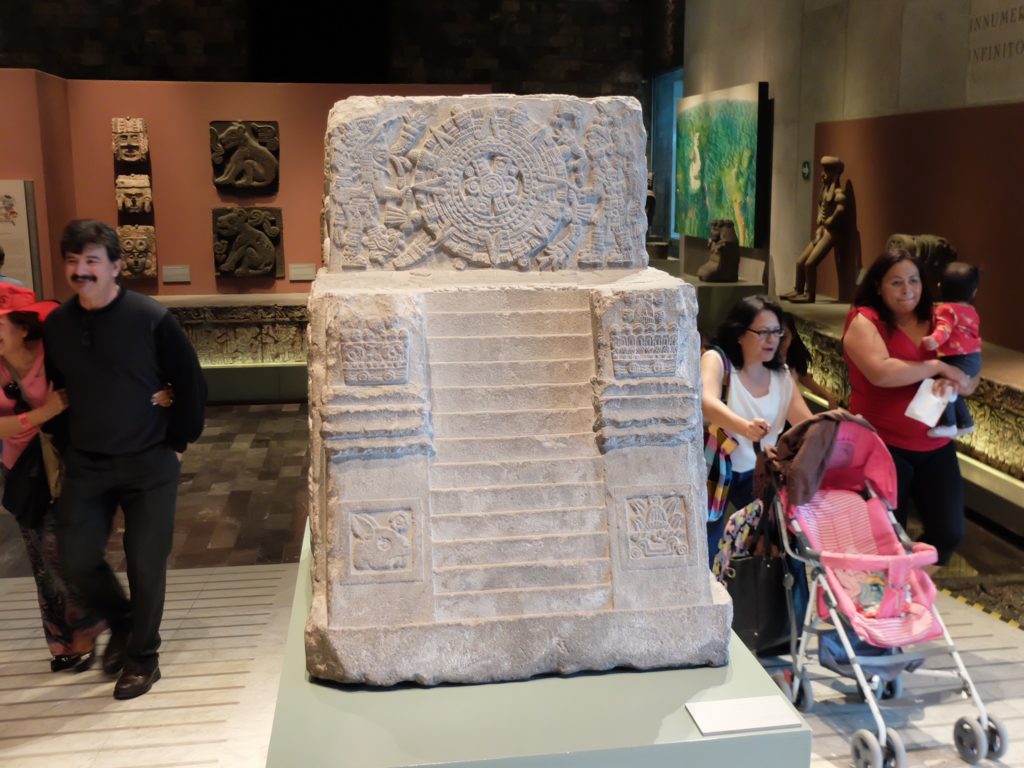
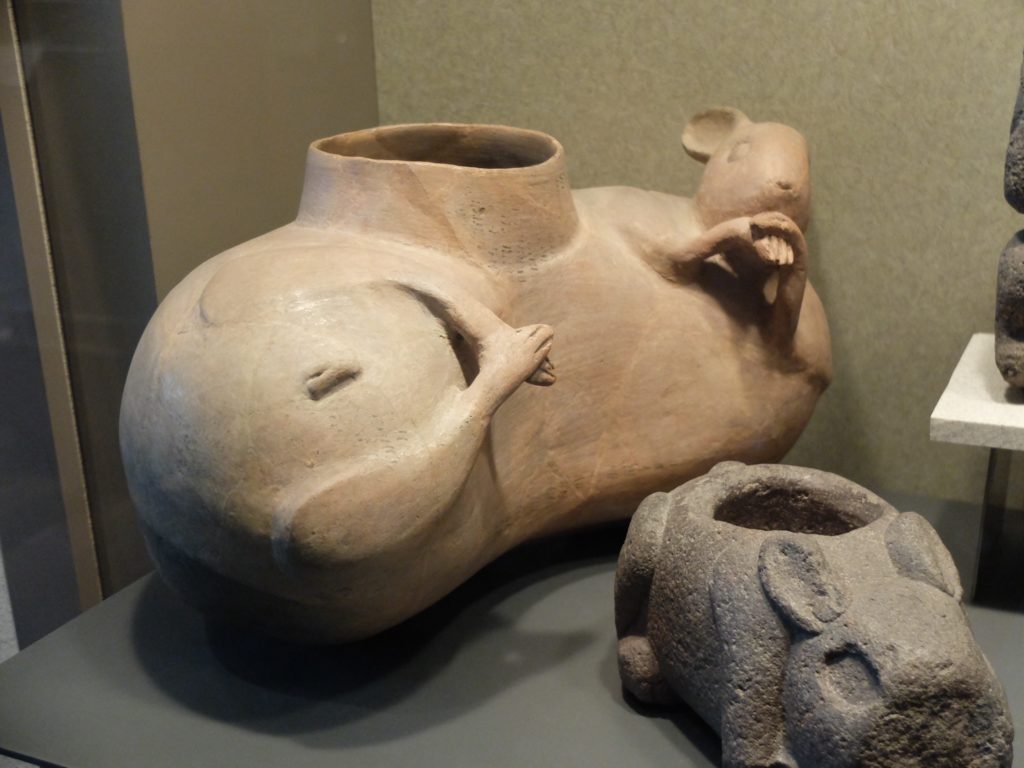
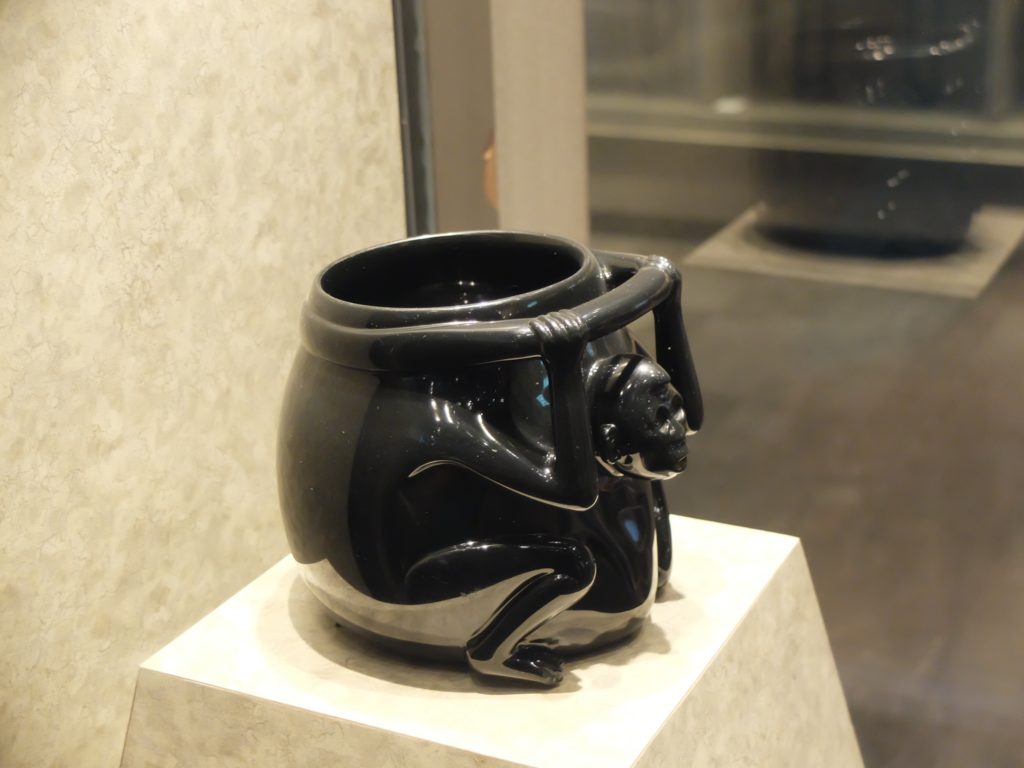
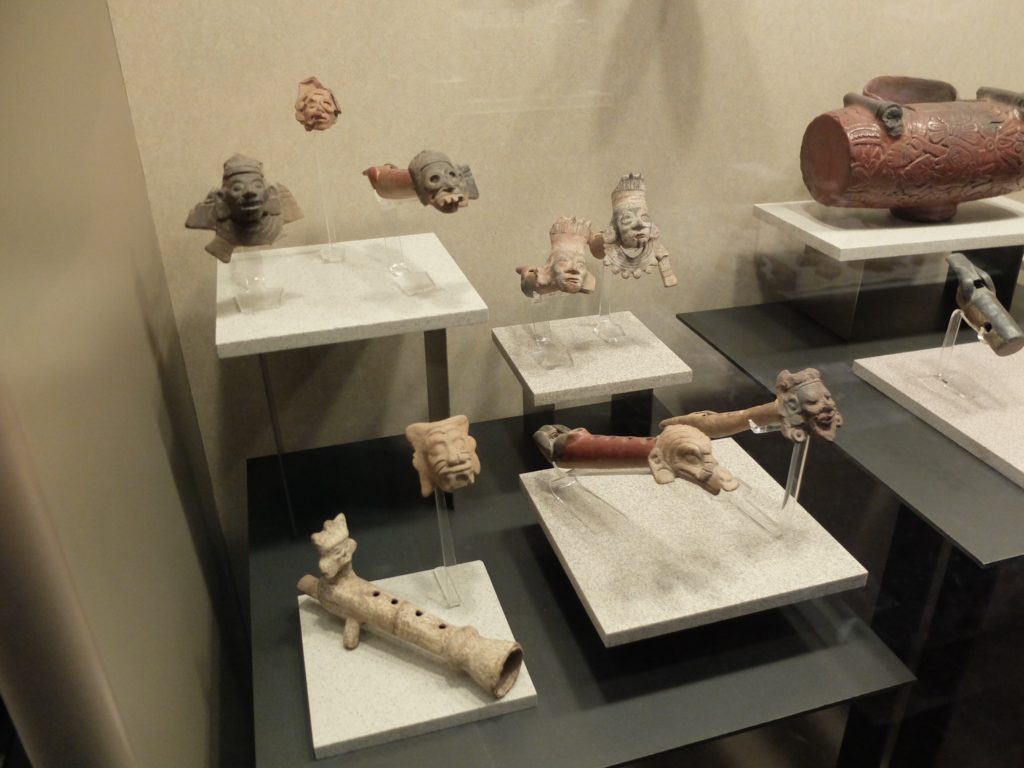
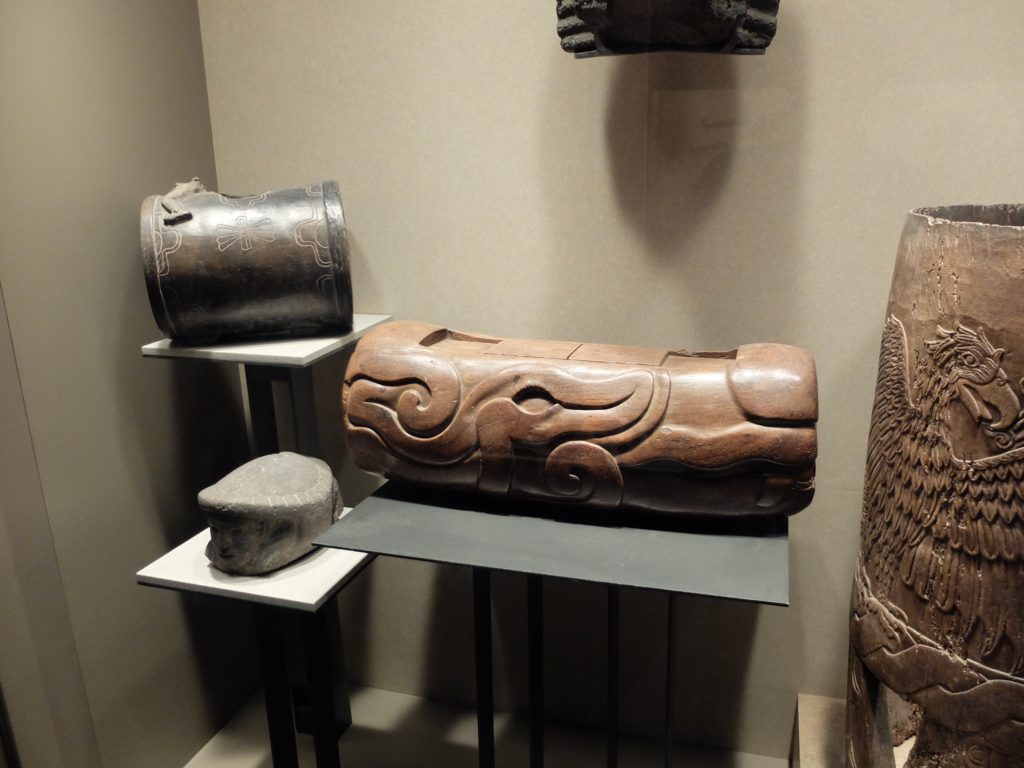
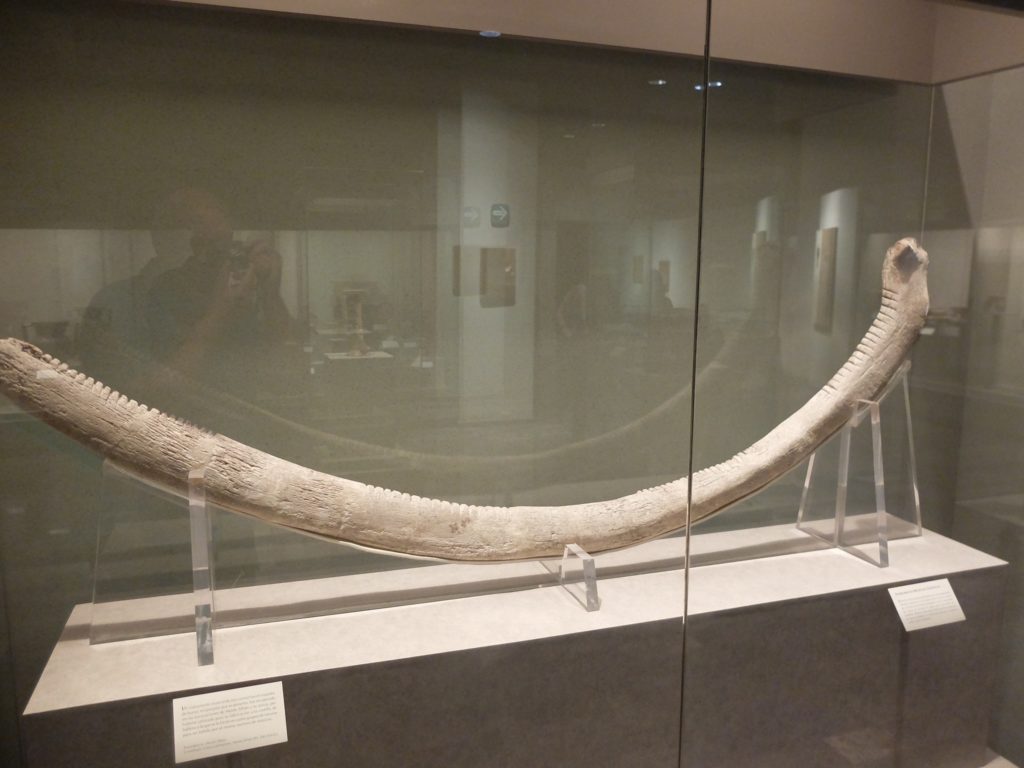
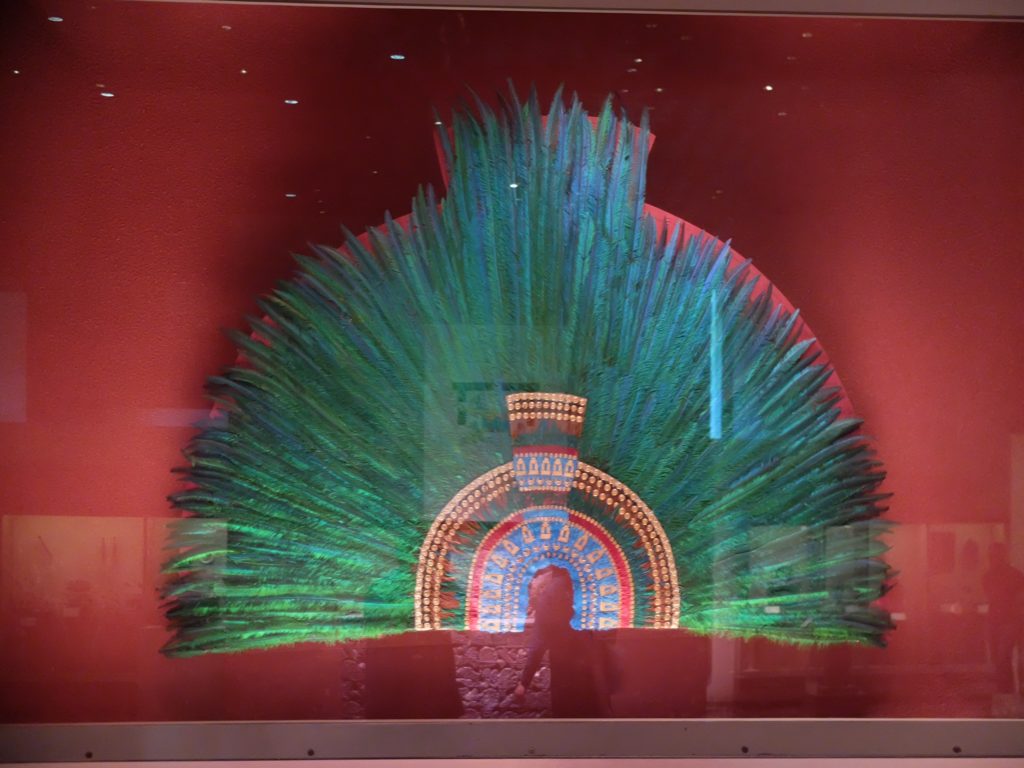
Leaving the Mexica room we proceeded to the set of “regional rooms,” starting with the Oaxaca region. We wandered, we looked, but frankly we were running out of steam. After brief views of the Gulf Coast region and the Northern region (artifacts in this room looked very familiar) we decided that our brains were full up and it was time to head back to the hotel to rest before our evening’s activity.
One additional note. In this post I have selected just a few of over 500 photos we took. This museum rivals any museum anywhere in terms of the extent of its collection. And what we personally experienced was at best 1/3 of the collection on display.
A second note. Beginning with our encounter with the “Venus of Willendorf” figurine in Vienna a couple of years ago I have been fascinated with (and collecting photos of) figurines at the various museums we have visited. Whether they are objects of worship or merely cultural icons (remember troll dolls?) they provide an element of mystery and a look at how people in a culture viewed themselves.
That said, the carving of figurines was popular in every era of Mesoamerican history. So I ended up taking hundreds of photos of figurines. Here are a couple.
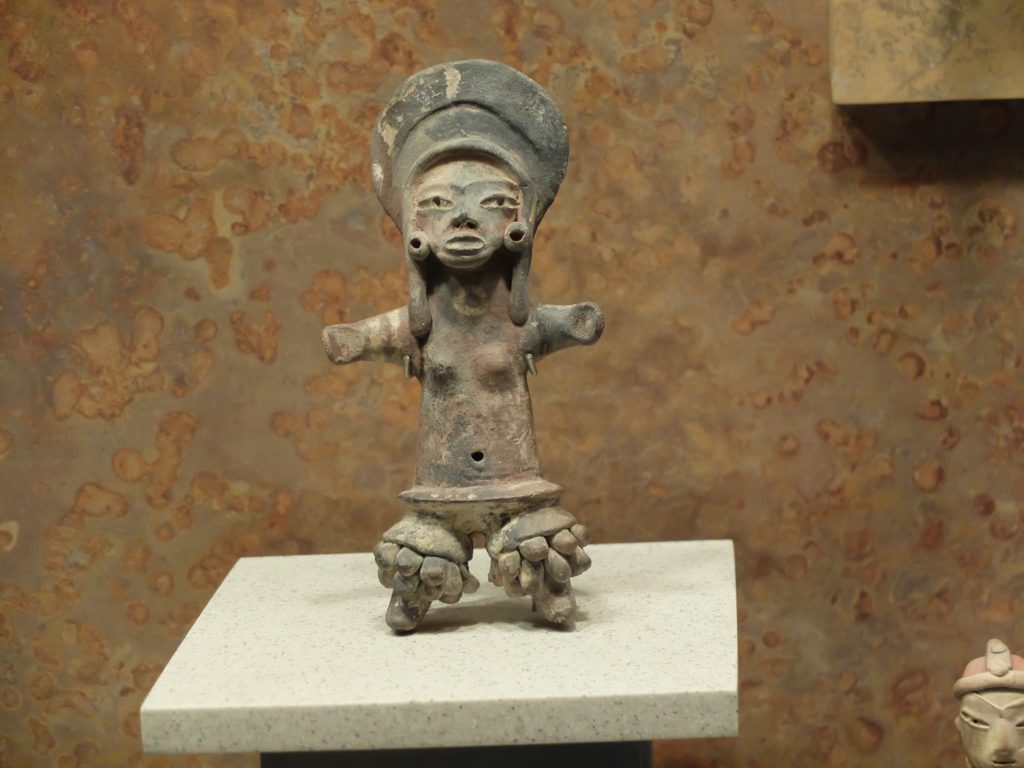
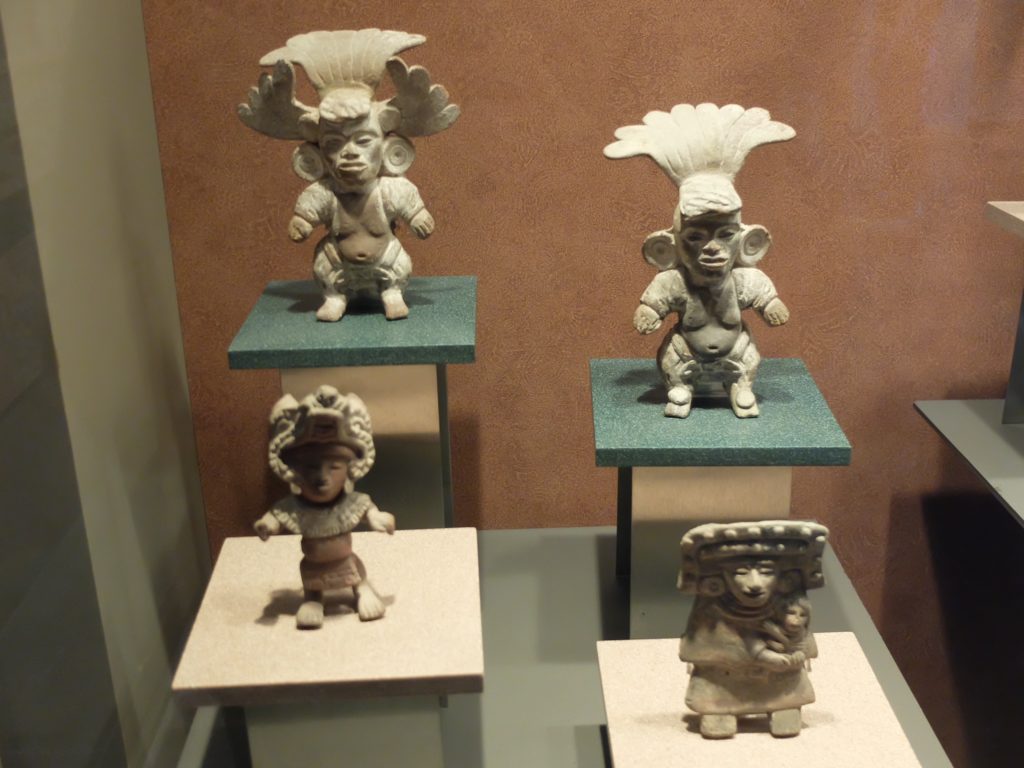
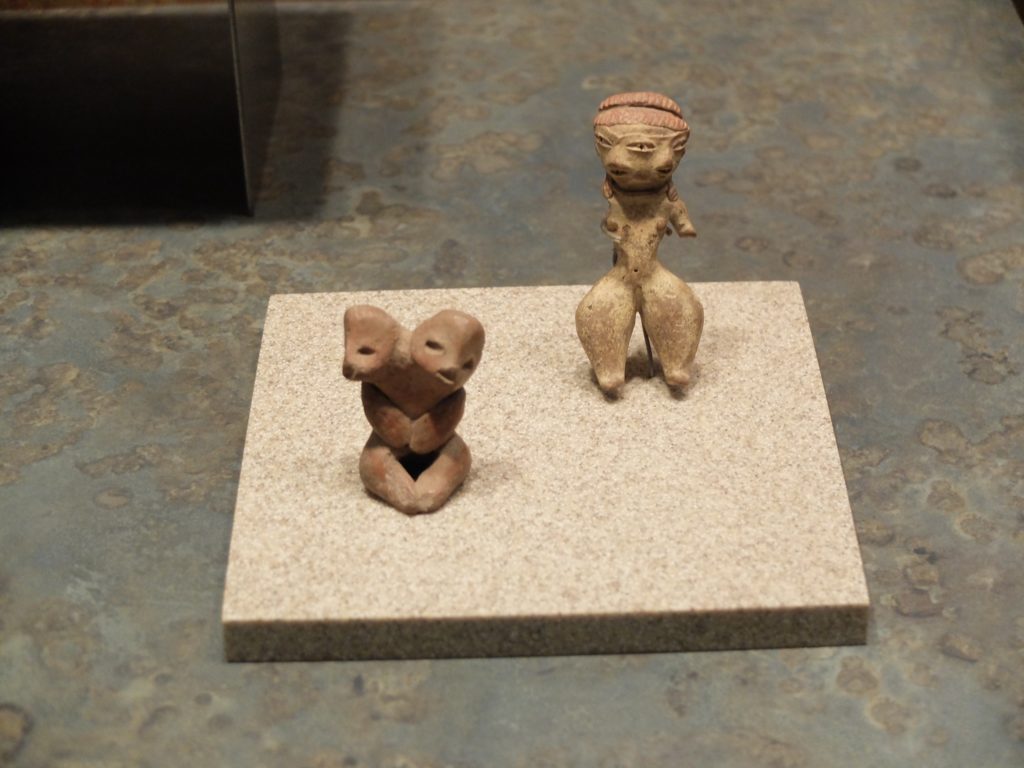
Then we went home (or at least to the hotel).
We rested, read, napped and had supper. Then it was into the Uber and off the the Palace of fine Arts.
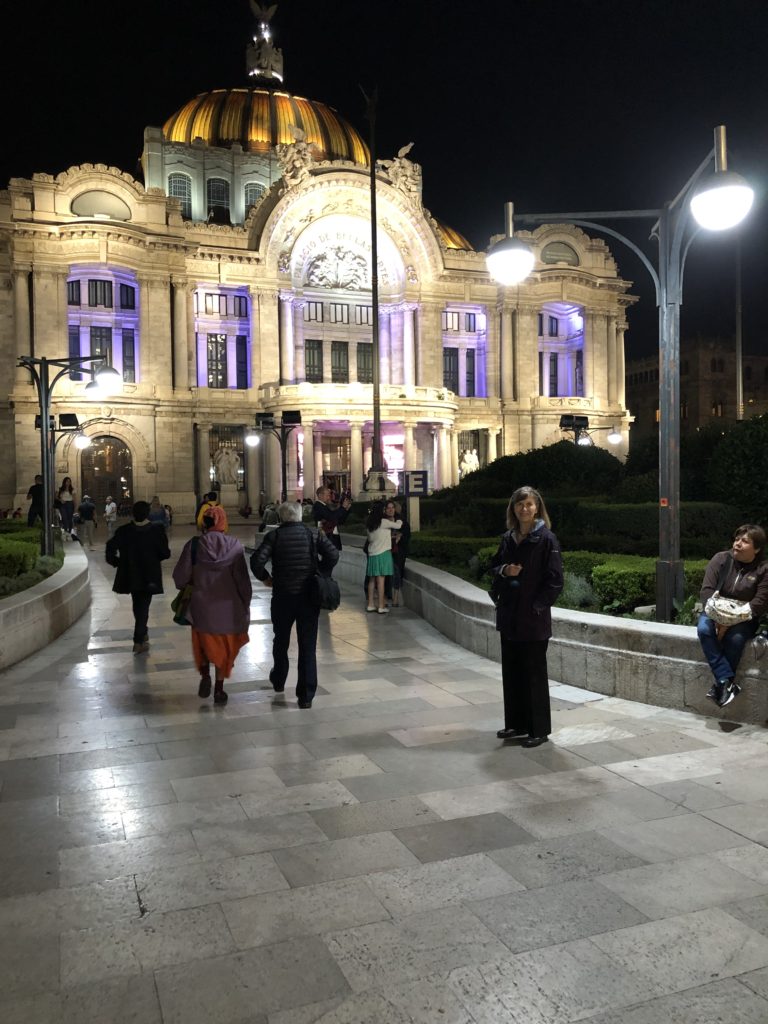
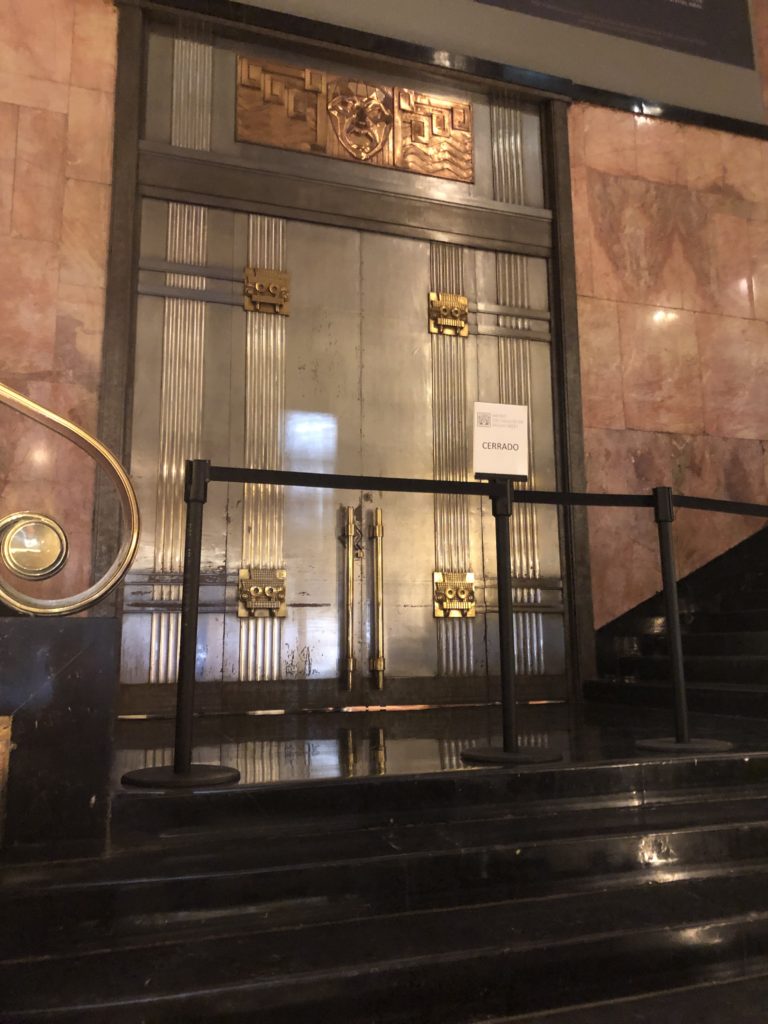
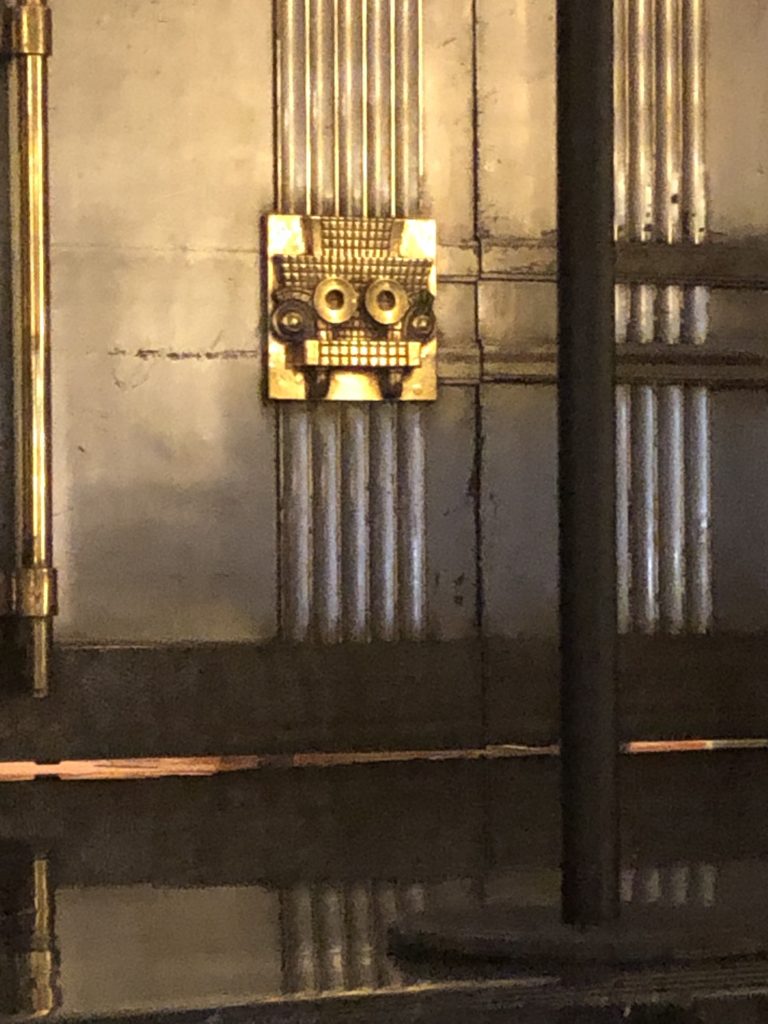
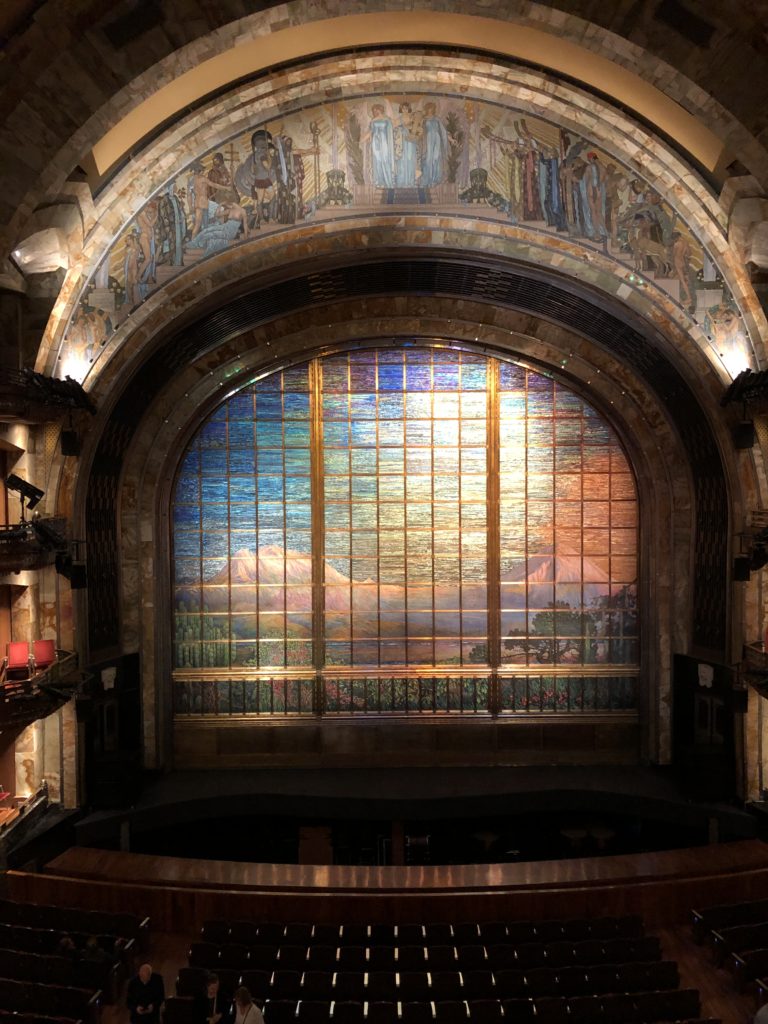
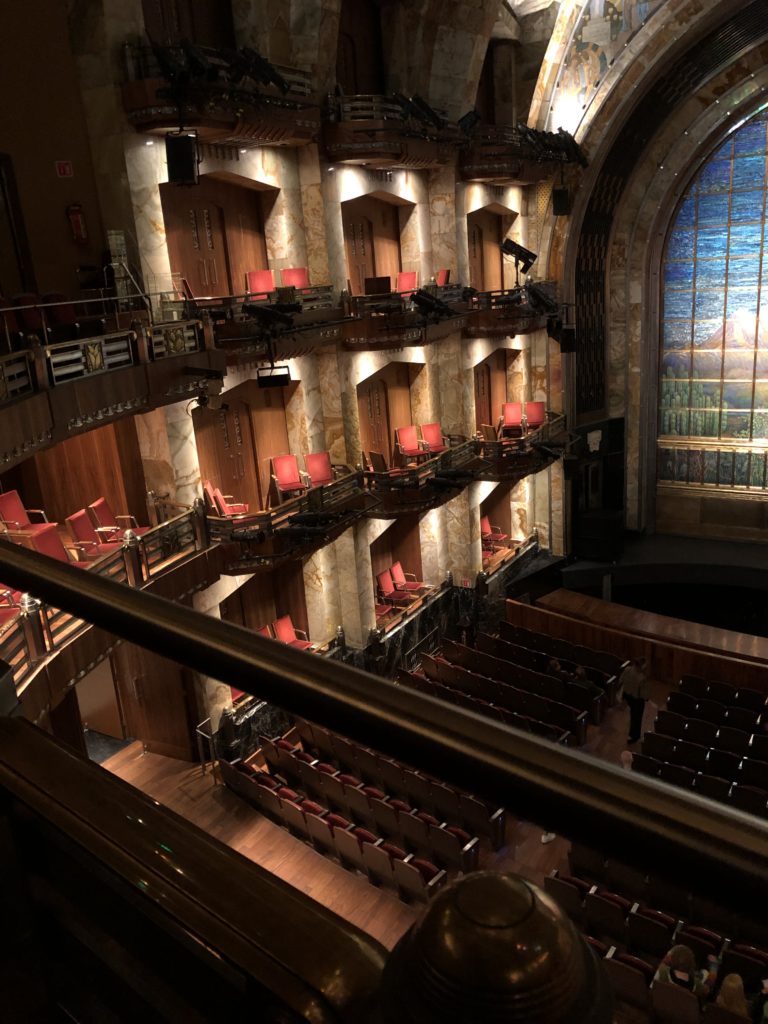
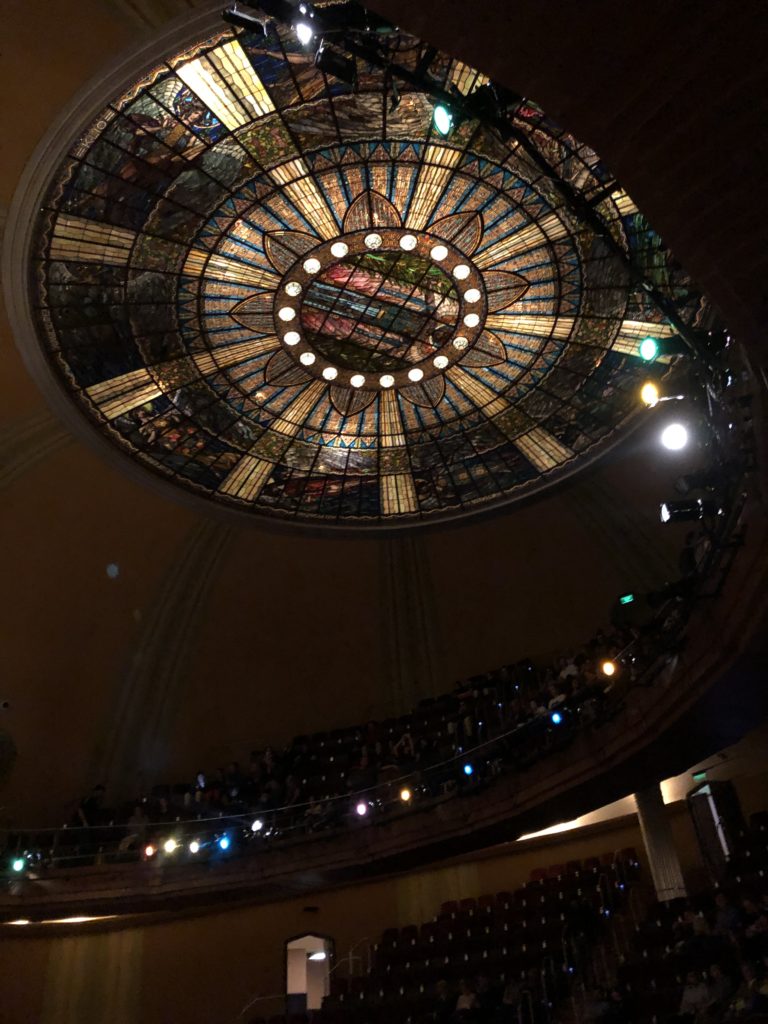
Eventually we got done gawking and very much enjoyed a performance by the Ballet Focklorico de Mexico.
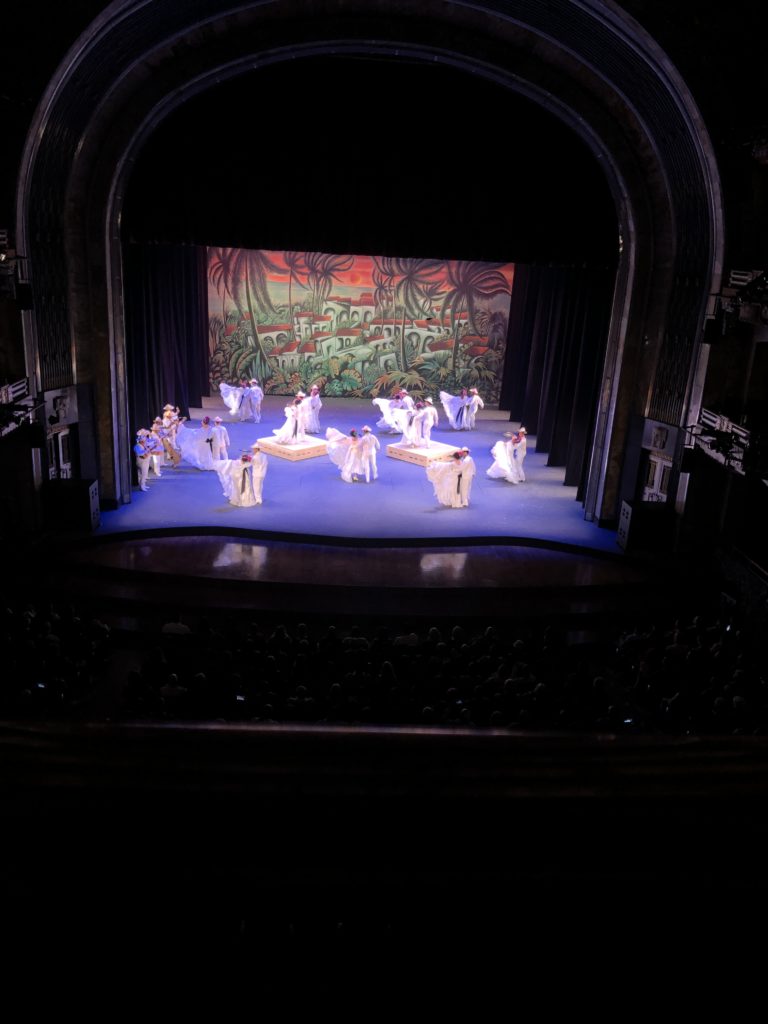
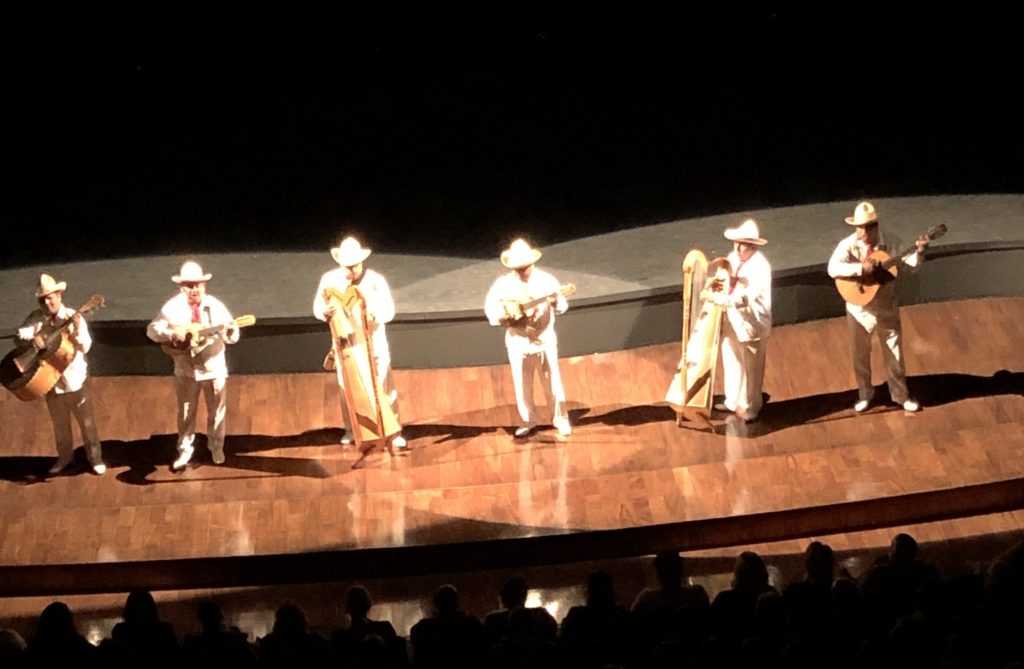
Obviously photos were not allowed so much of the performance remains in our memories. But we had a great time.
After that we found another Uber and it was back to the hotel to sleep, to dream, to rest up for the journey on the morrow.
I hope I didn’t bore you too much. It was a “full and complete” day, and a fitting finale for our adventure in Mexico.
Incredible!!! Just incredible!!!
Not bored! Incredibly happy that you guys found your groove in CDMX! And parade alabrijes! What an unexpected treat!!!